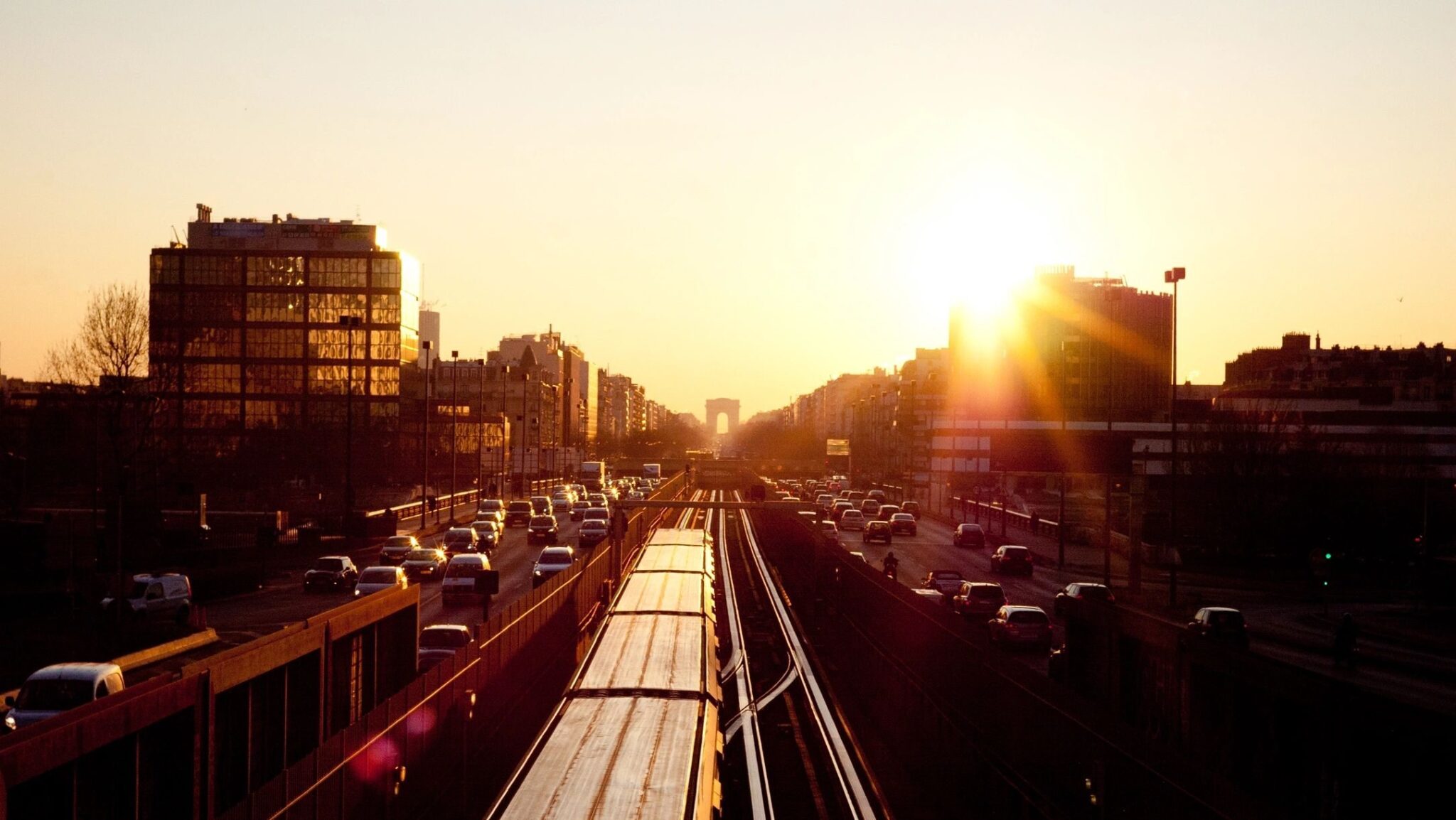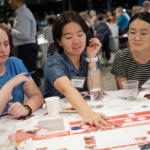You Can Help Beat Extreme Heat in Cities
Imagine a smoldering hot day in downtown Boston: temperatures have reached over 90 degrees Fahrenheit, and the sidewalks and streets are absorbing the strong heat from the sun and radiating it back into the air. Days like this are becoming hotter and more frequent. This “silent storm” causes more deaths in the US than all other weather hazards combined. Heat impacts human health, infrastructure, and the environment.
The Urban Heat Island (UHI) Effect
Urban areas trap heat inside of them, experiencing hotter temperatures than in surrounding suburban areas. Cities are built of concrete, asphalt, and dark surfaces that absorb the heat during the day and re-emit it back out at night. This means that urban areas are much hotter than suburban areas during the day and don’t cool back down at night.
This phenomenon is known as the urban heat island (UHI) effect. So how do city-dwellers escape the heat? What can we do to cool off our cities?
Bostonians can cool down by going to certain spots like “the common,” Boston’s historic park, or the revitalized Seaport District, right on the harbor. Parks and areas around the water tend to be much cooler because water can absorb a lot of heat energy without changing its temperature very much, thus slowing the warming of the surrounding area. Trees provide shade and are especially cool due to evapotranspiration (when water is transferred from the trees into the atmosphere, dispelling heat), creating a cooler environment around them.
However, not all neighborhoods and communities have access to a waterfront or a large green space. So, what can be done to make cities cooler?
Taking Action with Citizen Science
At the Museum of Science, Boston, in partnership with SciStarter, Arizona State University, Northeastern University, and the National Informal Science Education Network, we are working on a project to engage public participants in citizen science and resilience planning through a National Oceanic and Atmospheric Administration (NOAA) funded project called Citizen Science, Civics, and Resilient Communities (CSCRC). The US Climate Resilience toolkit defines resilience as “the capacity of a community, business, or natural environment to prevent, withstand, respond to, and recover from a disruption.”
Taking place at 28 science centers around the US over the next three years, the project aims to connect citizen science data to four weather and climate-related resilience issues: extreme heat, extreme precipitation, drought, and sea level rise. Participants from around the country will collect data and discuss strategies that communities can adopt to become more prepared and resilient to these climate issues.
Investigation in Boston
This summer, in this phase of the project, we are focused on resiliency planning in Boston for one hazard: extreme heat.
By focusing on citizen science projects related to extreme heat, we hope to immerse the public in learning about this important issue and build a greater understanding of how heat affects some areas more than others. For this phase of the project, we are using a citizen science platform called ISeeChange, where participants can document and learn more about the changing environment around them. Check out ISeeChange’s mission in the podcast created with SciStarter to learn more about the project. Posts on ISeeChange’s app or website typically include pictures and descriptions of weather and climate, and anyone anywhere in the world can post to ISeeChange about changes in their communities.
If you live in the Boston area and log into ISeeChange, you will see our Boston-specific investigation about extreme heat. ISeeChange investigations combine similar data and posts together to study collective impact. By posting to our investigation from the area, you can help the museum and our partners see and understand the hottest and coolest spots in the city and surrounding towns. You can post about areas that are hotter than others and areas that seem cooler to you. You can post about what you’re doing during a heat wave, or how the heat wave is affecting you or the people around you. Each post will be synced with current and past weather and climate data to explore trends and differences in climate over time. By involving the public in citizen science and connecting the activities to public forums, we hope that participants will gain a greater understanding of extreme heat while also helping town planners create resilience plans that reflect the priorities of the community.
We launched the pilot, “Wicked Hot Boston,” for our project on June 1 at the Climate Action Extravaganza during the Cambridge Arts River Festival. Many local organizations joined in the extravaganza to discuss pressing climate issues with local community members.
While there, we engaged festivalgoers of all ages in a short activity investigating the effects of urban heat islands. The activity modeled a local neighborhood scene: a heat lamp shining from above represented the sun, a colorful birdhouse with a white and black roof stood in for a real house, and a few 3-D printed trees completed the scene. Participants used an infrared thermometer to take and compare the temperature of the objects. The participants were then able to learn first-hand how dark objects absorb more heat than light colored objects, as well as how trees and the surrounding area can stay cool via tree evapotranspiration, or, as it’s sometimes known, “tree sweat.”
This activity–coupled with sample forum materials, a demonstration of how to post to ISeeChange, and a board where participants could write down ideas about how to deal with heat–engaged visitors to learn and explore about how extreme heat can affect their city and everyday lives. Festivalgoers came up with innovative ideas for how we can create a cooler Boston, stating that we could plant more trees, paint roofs white, install green roofs, and use lighter colored materials, many of which aligned with the messaging of our project and the Extravaganza itself.
Getting Involved
Now it’s your turn to tell us how you deal with extreme heat and the urban heat island effect! Our goal this summer is to engage at least 100 people in the Boston metro area in collecting data and planning for our region’s resilience. However, people from anywhere in the world can add ISeeChange observations pertaining to a number of hazards. Head over to our SciStarter page to start participating in citizen science on extreme heat!
After you post to the Boston ISeeChange investigation, don’t forget to save the date for our forum on extreme heat and citizen science. Anyone of any age can join us on September 24, 2019 at the Museum of Science, Boston to view the results from the citizen science projects, learn about the impacts of extreme heat, and work with other participants to explore and recommend resilience strategies to keep our communities cool. Look out for more information on the Museum website, SciStarter, or in our ISeeChange community! If you have any questions, please email [email protected].
Authors
Sara Benson
Sara Benson is a Forum Education Associate in the Forum Department at the Museum of Science, Boston. Sara is mainly focused on the Citizen Science, Civics, and Resilient Communities project and is passionate about resiliency strategies on climate hazards. Sara has her MA in Marine Affairs from University of Rhode Island and her BS in Marine Biology from University of North Carolina Wilmington.
David Sittenfeld
David Sittenfeld is Manager of Forums and National Collaborations at the Museum of Science. David has been an educator at the Museum for 20 years and oversees special projects pertaining to issues that lie at the intersection of science and society. He is also completing his doctoral research at Northeastern University, which focuses on participatory methods and geospatial modeling techniques for environmental health assessment and public engagement.
Roxanne Lee
Roxanne Lee is an intern in the Forum Department at the Museum of Science, Boston. Roxanne has a BS in Environmental Science from Simmons University and is currently pursuing a Master’s degree in Environmental Science and Policy at Northeastern University.




